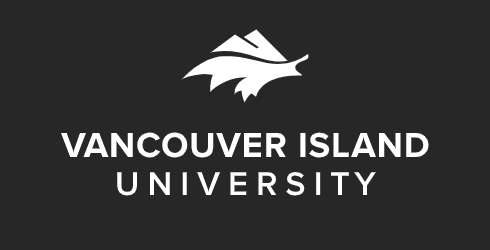The Canadian Letters and Images Project
"In Their Own Words"
Mission
The Canadian Letters and Images Project, created in 2000, is an online digital archive of the Canadian war experience, both home front and battlefront, from any conflict in which Canadians have participated. The focus of the project is on the personal materials of participants, such as letters and photographs, which permit us to experience the war through their eyes and their words. These are very often the stories of ordinary Canadians, largely forgotten and overlooked. Our mission is to digitally preserve and continue to make freely accessible this important part of Canada’s heritage for this generation and future generations.
Vision
To continue to expand this repository of Canadian archival materials by collaborating with Canadians to preserve and share the individual and collective stories that have shaped our past
Values
Accessibility to the past is key to understanding who we are as a nation. We are committed to free access for everyone to the materials of the project.
All collections are of equal importance. Every letter, photograph, or other artifact has an important story to tell.
The collections and their contents are not edited or censored. Our role as historians is not to judge the past in light of the present, but to present everything in its entirety at the time of its creation.
The Canadian Letters and Images Project brochure
Historical Language Advisory
As a digital archive of primary-source historical artifacts, the collection materials found in the Canadian Letters & Images Project may contain language and content that modern-day readers may find offensive. Materials reflect the view points of their original authors and will more generally tend to reflect their creation era’s racial, ethnic, social and cultural norms in way that may offend modern-day readers. Material are presented without editing in order to preserve an factual historical record of the past.
Our Collections
The collections which comprise this Project come from every part of the country, and from outside the country as well. In many respects this Project is a partnership with Canadians, as most of the materials found in this Project come from private families who have generously shared those materials with us.
The most important aspect of the Project’s work is that we do not keep original materials. The Canadian Letters and Images Project is seeking to borrow any correspondence, diaries, photographs or other personal materials connected to Canadians at war, home front and battlefront, from any conflict in which Canadians have participated. They are then digitized and returned to the family. In this manner Canadians can share these important materials from Canada’s past and yet still retain their valued family heirlooms. It is due to the generous sharing of these materials that the Project continues to grow.
The Canadian Letters and Images Project will make arrangements at our expense to have any materials picked up and returned by courier to ensure the safety of those materials.
We believe it is important to collect and recreate the personal side of the wartime experience as soon as possible, before such materials are forever lost or destroyed. Each and every piece of correspondence, every photograph, or any other item connected to Canadians during wartime, is a valuable artifact linking us to our past. While one letter or photograph may by itself seem insignificant, in combination with the multitude of other materials found in the Project that single item can help to tell a remarkable story of the unyielding spirit of a country at war.
Collection Contributions:
The Canadian Letters and Images Project is seeking to borrow letters, postcards, photographs, diaries, documents, or other personal materials connected to any aspect of the Canadian wartime experience, both home front and battlefront, from any conflict in which Canadians have served. Those materials will then be made freely available through the Project website (www.canadianletters.ca ) to everyone interested in Canada’s wartime heritage.
Scanned Materials
We are happy to accept to accept materials that have been scanned by the owner. However, in order to be compatible with our existing collections, we ask that they be sent either as jpg or tiff files, with a minimum resolution of 150 dpi. Pages of letters should be scanned separately, with an individual file size of 1.5 -2.0 mb. Information regarding the naming of scanned letters or other materials such as photographs can be found in the pdf files below
Transcribed Materials
We are happy to accept materials that you are transcribing or may have previously transcribed. All instructions for transcribing are found in the pdf files below. The most important point about transcriptions is that they must be exactly as in the original – we do not edit letters for content – and any spelling errors, grammatical errors, etc., must be transcribed exactly as in the originals.
If you are transcribing a collection, we ask that you forward to us either scans or photocopies of the originals, so that we can proof the transcriptions before they appear in the site. Ensuring the accuracy of the transcriptions is crucial for anyone using the site. We need to be able to verify the accuracy of transcriptions before they are uploaded.
CLIP Guide to Transcription: Preliminary Formatting
CLIP Guide to Transcription: Getting Started
CLIP Guide to Naming: Digitized Letters
Our Editorial Policy
We believe that every item that comes to us in the collections has merit and so all collections will appear in their entirety. The Project does not edit or censor any materials in its collections. We do not edit correspondence or select portions of collections, but include if at all possible all materials submitted to us. Our place is not to judge the historic merit of one person's experiences over those of another, nor is it to judge the appropriateness of language or content from the perspective of the present.
The Project has retained as closely as possible the original spelling, punctuation, and paragraph structure in the transcribed versions. We have not noted irregularities in spelling by the use of [sic] in order to remain as unobtrusive as possible in the transcribed versions. Words or portions of words which are missing or illegible are noted by the use of [?]. Overall the policy is to provide minimal explanatory notes unless absolutely essential to the understanding of the material, and instead to permit the material to tell its own story in its own words in the original form.
New Transcription Policy
Prior to 2023 all collection letters were transcribed, regardless of the collection size. However, continual growth in the number of collections donated, combined with project staffing and funding constraints, has resulted in an ever-increasing time gap between a collection’s initial intake date and the date when it became publicly accessible online. As a result, beginning in early 2023, letter transcriptions for most collections have been limited to between twenty-five and thirty-five letters only. This applies to the transcriptions only – image files (jpgs) of all letters in a collection will continue to be fully posted. As such, in large collections not all letters will be accompanied by a text transcription. We hope that in the future full letter transcriptions for all collections, including those currently posted as only partially transcribed, will be added as time and funding permit.
Contact Us
Dr. Stephen Davies Project Director
Department of History
Vancouver Island University
900 Fifth Street
Nanaimo, British Columbia
V9R 5S5
(250) 753-3245 ext. 2131



